DLV Flyer's Knife by SMF
SKU: 55.GOR.04.02.004
Estimated market value:
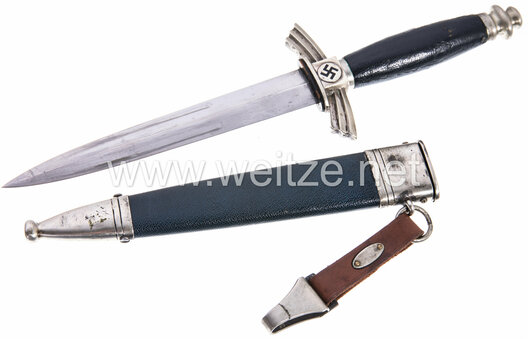
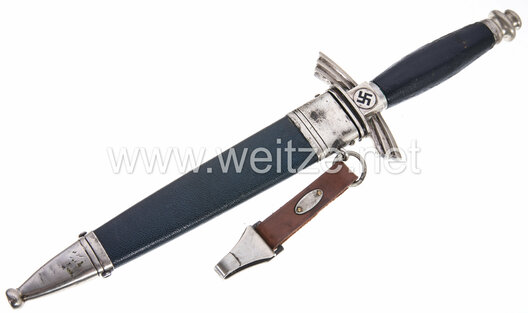
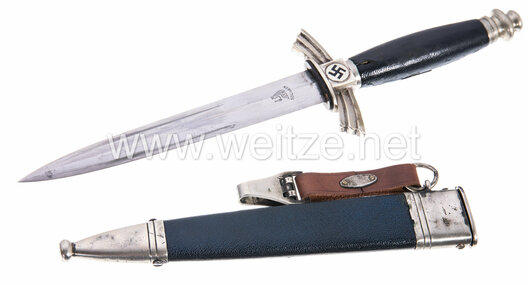
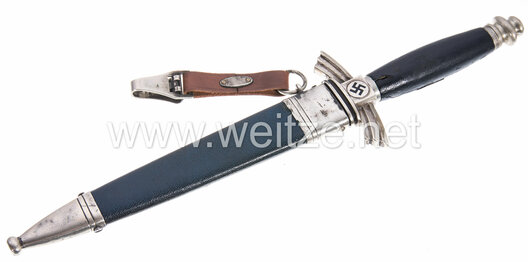
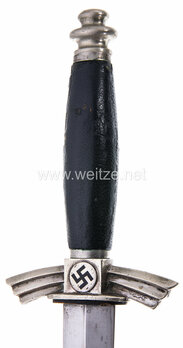
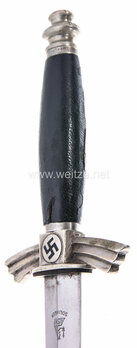
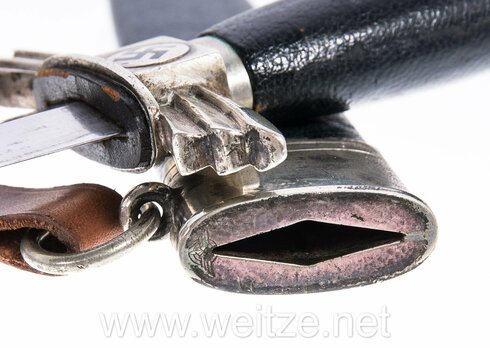
Estimated market value:
Attributes
History
On March 25, 1933 the DLV (Deutscher Luftsportverband = German Air Sports Association) was created as a civilian sports organisation, the umbrella organisation of all air-related sports. However, from the very beginning, the DLV was used to secretly train its members for future roles in the newly emerging Luftwaffe, a breach of the terms of the Versailles Treaty.
The organisation should not be confused with the Deutscher Luftfahrtverband (also abbreviated DLV), which was formed in 1902, but disbanded in favour of the new DLV under Third Reich rule.
The DLV was split into two groups, the civilian section and the secret military section, known as the “Fliegerschaft” (air crew). The organisation eventually became obsolete after the official unveiling of the Luftwaffe in 1935, and it was disbanded and replaced by the National Socialist Flyers Corps (NSFK or Nationalsozialistisches Fliegerkorps) in 1937.
The DLV edged weapons were only issued from 1934 to 1936, due to the introduction of edged weapons for the Luftwaffe in 1935. From 1935 to 1937, a transitional version of the DLV Officer’s dagger was manufactured and issued alongside the Luftwaffe dagger. It has a mix of DLV and Luftwaffe dagger attributes.
The DLV Officer’s dagger, also known as the Flyer’s Dagger, was instituted in 1934 by the DLV’s President Bruno Loerzer. A knife for non-Officer ranks within the DLV was introduced that same year, and it was worn when the personnel was dressed in their DLV uniform. This knife is known as the Flyer’s Knife (Fliegermesser).
The design of the DLV Flyer's Knife was co-opted for the NSFK Enlisted Ranks Knife when the NSFK replaced the DLV in 1937. The NSFK knives are identical to the DLV knives, except the knives of each organization are stamped with their specific organizational symbol on the scabbard throat. The symbol of the NSFK is a stylized Icarus figure with a swastika, while the symbol of the DLV is a winged propeller with a swastika.
The metal fittings on these knives, such as the pommel and the crossguard, are generally composed of silvered nickel with a protective layer of lacquer.
The pommel is composed of three tiered oblong sections, with the largest section in the middle.
The grip is composed of a wooden base covered in two pieces of fine quality, blue Moroccan leather. Each end of the grip features a ferrule.
The crossguard is composed silvered nickel with a central rectangular area and two side wings. The central area features a rounded medallion that contains a black swastika. The swastika is made from inlaid enamel on early knives and paint on later knives. The wings are composed of three elongated and stacked rectangular sections on a downward curve.
The blade is composed of steel, and it features a polished, doubled edged surface with no ricasso.
The scabbard is composed of an internal steel shell that is covered in blue Moroccan leather, or leather that was coloured to match the leather on the grip. There are two metal fittings on the scabbard, one at the top (locket) and the other at the bottom (chape). The locket features a carrying ring, onto which a dagger hanger could be attached. All elements of the scabbard fittings are composed of nickel.
The dagger hanger features a brown leather hanger, a nickel snap clip, and nickel pendants on the leather hanger to hold it closed. The hanger was always attached to the scabbard’s top fitting.
The manufacturer marks are generally acid etched onto the reverse of the blade, below the crossguard.
There may be additional stamps on the scabbard throat. For example, early DLV knives may feature the Luftwaffe Waffen-Amt “LWaA” acceptance marking from a factory inspector. This mark is made up of an abstract line eagle with associated numbers and letters. This inspector mark should also be duplicated on the end of one of the crossguard wing-ends. Additional markings on the crossguard wing-ends or scabbard throat may be associated with the knife’s owner or other manufacturers. For example, one of the crossguard arm-ends will generally feature a stamped “K”. The “K” is the mark of the caster who made the knife fittings. While it is possible to find genuine DLV and NSFK knife without the “K” mark, they are quite rare.

Versions
$1,000 USD


Comments
Sign in to comment and reply.


Scroll Top